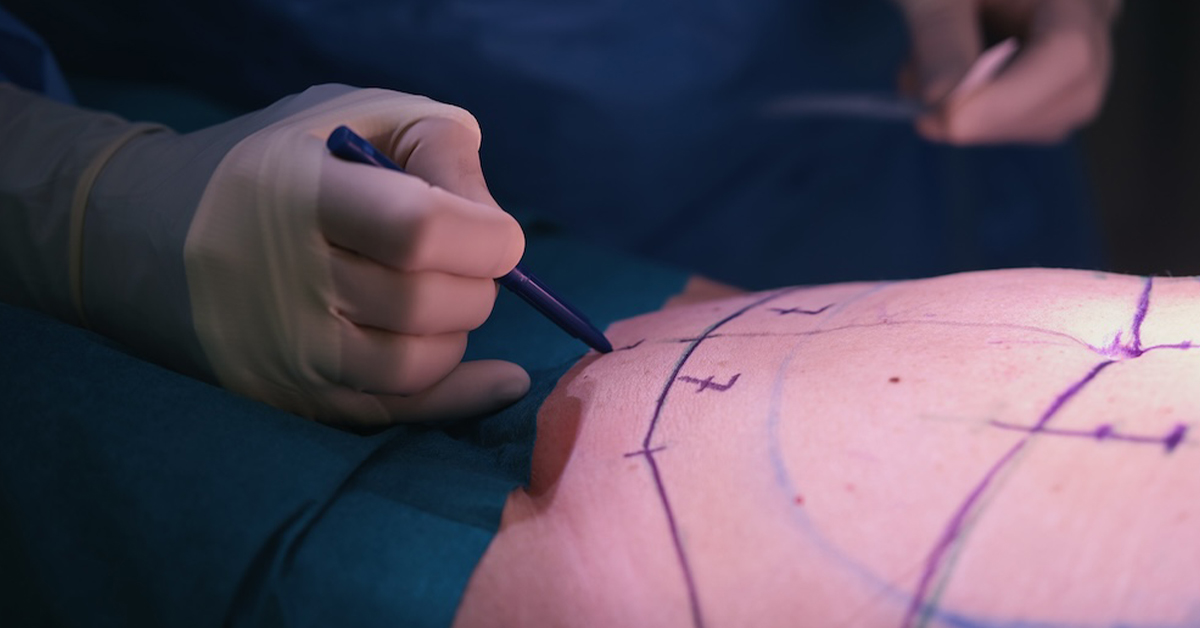How to Avoid Fat Embolism After Liposuction?
Liposuction is a popular cosmetic surgery procedure that helps individuals remove excess fat from their bodies, resulting in a more sculpted and toned appearance. However, like any surgical procedure, Liposuction carries certain risks, and one of the potential complications is fat embolism. Fat embolism occurs when fat cells enter the bloodstream and travel to the lungs or other organs, leading to serious health issues. In this article, we will discuss the importance of avoiding fat embolism after Liposuction and provide essential tips to minimize the risk of this complication.
What Are the Symptoms of Fat Embolism After Liposuction and How Can They Be Detected Early?
Fat embolism after Liposuction can have severe consequences if not detected and addressed promptly. Therefore, it is crucial to be aware of the common symptoms associated with this condition. The following are some indicators of fat embolism after Lipo:
Symptoms:
-
Shortness of breath and rapid breathing.
-
Chest pain or tightness.
-
Blue or pale skin.
-
Low oxygen levels in the blood.
-
Rapid heartbeat.
-
Mental confusion or agitation.
-
Swelling in the extremities.
Identifying these symptoms early is essential to ensure immediate medical intervention. To detect fat embolism after Liposuction, physicians may employ the following diagnostic methods:
Detection methods:
-
Chest X-ray: This imaging technique helps identify any abnormalities in the lungs, such as fluid accumulation or damage caused by fat embolism.
-
Blood tests: Analyzing blood sample assists in determining the oxygen levels and identifying any abnormalities associated with fat embolism.
-
Magnetic Resonance Imaging (MRI): This diagnostic method may be used to visualize the flow of fat cells within the body and detect any leakage into the bloodstream.
Early detection of fat embolism after Lipo is crucial for prompt treatment and a better prognosis.
What are the Risk Factors for Fat Embolism After Liposuction?
Several risk factors increase the likelihood of developing fat embolism after Liposuction. Being aware of these risk factors can help individuals and surgeons take necessary steps to minimize the chances of fat embolism occurring. The following are some significant risk factors for fat embolism after Liposuction:
Risk Factors:
-
Extensive Liposuction: The larger the volume of fat removed during liposuction, the higher the risk of fat embolism. Extensive procedures may necessitate longer operating times, increased trauma to the fat cells, and greater potential for leakage.
-
Rapid Fat Removal: When fat is removed quickly during Lipo, there is a heightened risk of fat cells entering the bloodstream and causing embolism.
-
Visceral Fat Removal: Visceral fat, which surrounds internal organs, is more likely to enter the bloodstream during Liposuction. Its proximity to vital organs poses a higher risk of complications if embolism occurs.
-
Patient’s Health: Individuals with certain medical conditions, such as obesity, heart disease, or lung disease, may be more susceptible to fat embolism after Liposuction.
-
Inexperienced Surgeons: Choosing a qualified and experienced surgeon is crucial. Surgeons with inadequate knowledge and skills may inadvertently increase the risk of fat embolism during the Lipo procedure.
Understanding these risk factors allows individuals and surgeons to implement appropriate preventive measures and reduce the chances of fat embolism.
What Precautions Can Be Taken During Liposuction to Avoid Fat Embolism?
Preventing fat embolism begins with taking necessary precautions during the Liposuction procedure. Surgeons must follow specific protocols and guidelines to minimize the risk of fat embolism. Some essential precautions to avoid fat embolism during Liposuction include:
Precautions:
-
Gradual Fat Extraction: Employing a gradual and controlled fat extraction technique allows for a safer Liposuction procedure. This approach minimizes damage to fat cells, reducing the likelihood of embolism.
-
Tumescent Technique: The tumescent technique involves injecting a large volume of a diluted anesthetic solution into the targeted areas before fat removal. This method helps in reducing bleeding and subsequent leakage of fat cells into the bloodstream.
-
Smaller Incisions: Making smaller incisions during Liposuction can contribute to minimizing trauma to the fat cells, reducing the chances of fat embolism.
-
Proper Equipment: Using appropriate Liposuction equipment, such as micro cannulas, can aid in precise and controlled fat extraction, minimizing damage to the fat cells.
-
Intraoperative Monitoring: Continuous monitoring during the procedure, including vital signs, oxygen saturation, and end-tidal carbon dioxide levels, helps in identifying early signs of fat embolism.
-
Careful Positioning: Proper positioning of the patient during Liposuction can assist in avoiding unnecessary pressure on the fat cells, reducing the likelihood of fat leakage.
Following these precautions ensures a safer Liposuction procedure and helps in preventing fat embolism.
What is the Role of Postoperative Care in Preventing Fat Embolism After Liposuction?
Postoperative care plays a crucial role in the prevention of fat embolism after Liposuction. Structured care protocols and patient education are essential to minimize the risk of complications. The following measures should be considered during the postoperative period:
Postoperative Care:
-
Compression Garments: Wearing compression garments post-operatively helps reduce swelling, improve blood circulation, and minimize the chances of fat cells entering the bloodstream.
-
Monitoring Vital Signs: Monitoring vital signs regularly, including oxygen saturation levels, allows for early detection of any complications.
-
Early Ambulation: Encouraging early ambulation aids in improving circulation and reducing the chances of blood clots or fat cells lodging in blood vessels.
-
Proper Hydration: Adequate hydration is essential for a smooth recovery and helps promote efficient blood circulation.
These postoperative measures ensure proper healing, reduce the risk of complications, and prevent fat embolism after Liposuction.
Are There Any Long-term Risks of Fat Embolism After Liposuction?
While fat embolism is a potential short-term risk after Liposuction, it is essential to consider the long-term implications as well. Though rare, fat embolism can lead to severe complications and even fatalities. Prolonged or untreated fat embolism can have long-term effects on various organs, such as the brain, heart, and lungs. These effects may include:
Long-term Risks:
-
Heart and Lung Damage: Fat emboli can impair the functioning of the heart and lungs, leading to long-term respiratory and cardiovascular issues.
-
Neurological Damage: Fat embolism can cause brain damage, resulting in cognitive impairment, memory loss, and coordination difficulties.
-
Organ Failure: In severe cases, fat embolism can lead to organ failure, requiring long-term medical intervention or even organ transplantation.
Conclusion:
Fat embolism is a significant concern when undergoing Liposuction surgery. However, through understanding the symptoms, risk factors, and precautions, the risk of fat embolism can be minimized. Close monitoring during the postoperative period, along with appropriate care measures, can also aid in preventing fat embolism and ensuring a safe recovery.
By following these guidelines and working with qualified healthcare professionals, individuals can reduce the chances of fat embolism and achieve the desired results from their Liposuction procedure.
Liposuction in Miami, FL
Liposuction is a surgical procedure that can help you attain the body shape you desire. If you are interested in learning more, call us now at (305) 406-9055 or schedule a consultation online Now.







